
- Forums New posts Unanswered threads Register Top Posts Email
- What's new New posts New Posts (legacy) Latest activity New media
- Media New media New comments
- Boat Info Downloads Weekly Quiz Topic FAQ 10000boatnames.com
- Classifieds Sell Your Boat Used Gear for Sale
- Parts General Marine Parts Hunter Beneteau Catalina MacGregor Oday
- Help Terms of Use Monday Mail Subscribe Monday Mail Unsubscribe

Island Packet 31 strengths and issues
- Thread starter Windhorse
- Start date Sep 13, 2019
- Forums for All Owners
- Ask All Sailors
Hi y’all, I am looking to by my first cruiser, and was hoping to get some input on the strengths, quirks, and issues to look for when looking for a used Island Packet 31. Appreciate your help in advance!
Dave Groshong
The island packet 31 sailboat.
JK_Boston_Catalina310
Where are you planning to cruise? What is YOUR skill level?
JK_Boston_Catalina310 said: Where are you planning to cruise? What is YOUR skill level? Click to expand
justsomeguy
Windhorse said: issues to look for Click to expand
SG said: Beyond those questions... How many crew and occasional guests? How often do you sail, and for what continuous duration? What are the expectations of your crew? (are you singlehanding most of the time?) What do you want to do with the boat? If you want to know the physical issues with that particular Island Packet, and you've made-up your mind, WHY DID YOU CHOSE IT? Click to expand
Joe said: I don't get it... the poster asks the questions, we try to answer them...…. he's already decided on the boat.. he just wants help in getting a good one. All the questions are immaterial. Click to expand
Appreciate the tip on the aluminum tanks! Thanks all, I have not decided on the boat per se, but I do appreciate the insights that more experienced sailors have. Good point on “cruiser” - that was vague. My cruising companions, be it coastal or elsewhere, are new to sailing and I would like to have a boat that is capable , sea-kindly, and although I would be fine with a narrower beam and stronger performance upwind, the rest of the crew is currently not on board with that idea. To questions about use: Singlehanded with moderate assistance 2-3 days max for the next few years I would guess Coastal cruising, occasional regattas, currently reside inTX, so Gulf Coast Any other general or specific problems to be wary of when considering an IP31?
Windhorse said: Appreciate the tip on the aluminum tanks! Thanks all, I have not decided on the boat per se, but I do appreciate the insights that more experienced sailors have. Good point on “cruiser” - that was vague. My cruising companions, be it coastal or elsewhere, are new to sailing and I would like to have a boat that is capable , sea-kindly, and although I would be fine with a narrower beam and stronger performance upwind, the rest of the crew is currently not on board with that idea. To questions about use: Singlehanded with moderate assistance 2-3 days max for the next few years I would guess Coastal cruising, occasional regattas, currently reside inTX, so Gulf Coast Any other general or specific problems to be wary of when considering an IP31? Click to expand
That is a cruising boat. It's build to sail primarily off the wind. It will be a comfortable ride and track like a railroad car. According to sailboatdata.com. the 31 is cutter rigged which seems right. A cutter will not point like a sloop rig will. But it is considered good for cruising with many sail configurations and smaller sails to handle. Generally folks don't tack cutter rigged boats as much as sloops. Com Pac has a reputation for building strong boats.
I know Island Packet has a reputation for being "sea kindly" and solidly built but there are other things to consider. Smaller boats are more affected by the environment than larger boats, both in water line length and displacement. This is with regard to wind, waves and even rain. Bigger boats generally have more room to stay out of the weather. For the the same price as an Island Packet 31 you might get something like a Catalina 34. Looking at the numbers, they have about the same capsize ratio and motion comfort numbers (FWIW) but the Catalina has a PHRF rating around 145 compared to the IP 31 at around 200. The Catalina has more room below and will travel faster which both add to comfort since you will be at the anchorage (or dock) faster. You mentioned single handing, the Catalina 34 actually has less sail area than the IP 31 so, if rigged comparably, might actually be easier to single hand and will also be more maneuverable despite being a bigger boat. I threw the Catalina 34 out there because there are a lot of them out there so easy to find but you could swap that out with numerous other performance cruising boats like Pearson, Islander, C&C, CS (the 33 is a sweet boat) etc.
Kings Gambit
So, Admiral and I sailed as crew/guests on a friend’s IP 37 (Cutter) from Tierra Verde, Fl to the Dry Tortugas and back, a few yr ago. Plus, my dock neighbor (slip next to me) of five or so years had the IP 380. They are beautiful, well crafted yachts. But, they are very slow in light airs. Cutters are not great for day sailing if there is much tacking involved. The cockpit of the 37 was fully enclosed which was much appreciated when the T-storms came through nearly every night at Dry Tortugas. Leaving Dry Tortugas the wind had been blowing from the east at > 15 kt for two or three days. Once beyond the influence of the reefs, there was significant sea conditions which we sailed on a reach a little fwd of the beam for several hr; mainsail and staysail. It was a very comfortable ride with a decent turn of speed. Later, toward evening, as the wind began abating, the boat could not make its course as well going more up wind. Eventually, we motored through most of the night with fairly “small” seas (maybe 3 ft) arriving on the bow. The yacht hobby-horsed very uncomfortably every few wave sets to the point where it was nearly stopped at times. That was a long night with a lot of uncomfortable motion below. Once we arrived at Ft Meyers and entered the ICW going back, the yacht was very comfortable once again. I think the weight aft (davits; dink + outboard) might have contributed to the hobby-horsing. Personally, I would not buy one myself; not with all of the choices out there these days. The cutter is good if you are actually going to be out there in significant sea conditions for long passages. But if not, a straight sloop might be the better choice.
- This site uses cookies to help personalise content, tailor your experience and to keep you logged in if you register. By continuing to use this site, you are consenting to our use of cookies. Accept Learn more…
Island packet 38
The island packet 38 is a 38.0ft cutter designed by bob johnson and built in fiberglass by island packet yachts between 1986 and 1993., 188 units have been built..
The Island packet 38 is a moderate weight sailboat which is a good performer. It is very stable / stiff and has a good righting capability if capsized. It is best suited as a bluewater cruising boat. The fuel capacity is average. There is a good water supply range.
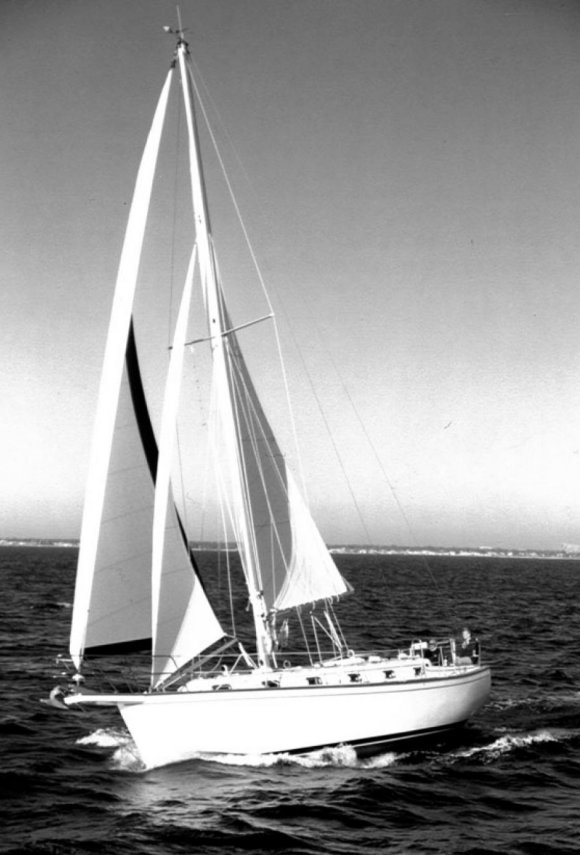
Island packet 38 for sale elsewhere on the web:

Main features
Login or register to personnalize this screen.
You will be able to pin external links of your choice.

See how Sailboatlab works in video

We help you build your own hydraulic steering system - Lecomble & Schmitt
Accommodations
Builder data, other photos.
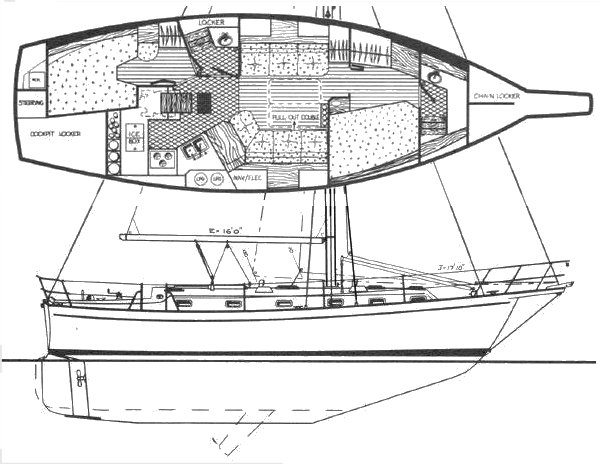
Modal Title
The content of your modal.
Personalize your sailboat data sheet
- New Sailboats
- Sailboats 21-30ft
- Sailboats 31-35ft
- Sailboats 36-40ft
- Sailboats Over 40ft
- Sailboats Under 21feet
- used_sailboats
- Apps and Computer Programs
- Communications
- Fishfinders
- Handheld Electronics
- Plotters MFDS Rradar
- Wind, Speed & Depth Instruments
- Anchoring Mooring
- Running Rigging
- Sails Canvas
- Standing Rigging
- Diesel Engines
- Off Grid Energy
- Cleaning Waxing
- DIY Projects
- Repair, Tools & Materials
- Spare Parts
- Tools & Gadgets
- Cabin Comfort
- Ventilation
- Footwear Apparel
- Foul Weather Gear
- Mailport & PS Advisor
- Inside Practical Sailor Blog
- Activate My Web Access
- Reset Password
- Pay My Bill
- Customer Service

- Free Newsletter
- Give a Gift

How to Sell Your Boat

Cal 2-46: A Venerable Lapworth Design Brought Up to Date

Rhumb Lines: Show Highlights from Annapolis

Open Transom Pros and Cons

Leaping Into Lithium

The Importance of Sea State in Weather Planning

Do-it-yourself Electrical System Survey and Inspection

Install a Standalone Sounder Without Drilling

Rethinking MOB Prevention

Top-notch Wind Indicators

The Everlasting Multihull Trampoline

In Search of the Snag-free Clew

What’s Involved in Setting Up a Lithium Battery System?

Reducing Engine Room Noise

Breaking Point: What Can Go Wrong With Your Yanmar?

Mildew-resistant Caulks for Boats

Can We Trust Plastic Boat Parts?


Repairing Molded Plastics

Mailport: Marine plywood, fuel additives, through bolt options, winch handle holders

The Day Sailor’s First-Aid Kit

Choosing and Securing Seat Cushions

Cockpit Drains on Race Boats

Rhumb Lines: Livin’ the Wharf Rat Life

Resurrecting Slippery Boat Shoes

Shoe Goo’s Gift to Sailors

Tricks and Tips to Forming Do-it-yourself Rigging Terminals

Marine Toilet Maintenance Tips

Learning to Live with Plastic Boat Bits

The Ultimate Guide to Caring for Clear Plastic
- Sailboat Reviews
PS Boat Review: Island Packet Estero
Island packet’s new shoal-draft cruising sailboat keeps it simple..
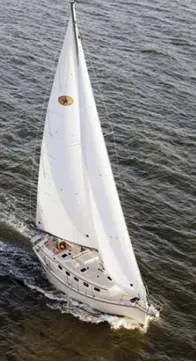
Photos by Billy Black
Florida-based Island Packet targets a relatively narrow niche, so the toughest competitors to its new boats are often older Island Packets. Introduced in 2010, the 36-foot shoal draft Estero is the company’s latest attempt to introduce a distinctive model that doesn’t stray too far from the company’s proven formula for success: moderate displacement, full-keel cruisers designed to be lived on, sailed far and in comfort, and endure the bumps, scrapes, and storms that cruising boats inevitably encounter.
Like every new Island Packet, the Estero emerged from the drawing board of founder, owner, CEO and chief designer Robert “Bob” Johnson. A graduate of Massachusetts Institute of Technology with a masters in naval architecture and marine engineering, Johnson worked for McDonell Douglas for two years on ballistic missiles, dabbled in high-tech (for that era) surfboards, then followed his boat dreams to southwest Florida in 1974. He ran the Irwin Yachts plant for production-boatbuilding pioneer Ted Irwin, and then moved onto Endeavour. Johnson designs from that era include the Stamas 44, Endeavour 43, and the Endeavour 40.
Opportunity knocked in 1979, when Johnson turned the liquidated molds for the 26-foot Bombay Express into the Island Packet 26, a catboat-like center-boarder that quickly found a niche. The IP 26 eventually became the full-keel IP 27, which enjoyed a run of 249 hulls between 1984 and 1992. Island Packet has unveiled 24 new Johnson designs during the past three decades. With a few exceptions—the Packet Cat catamaran, the Packet Express powerboat, and the recently introduced 42-foot motorsailer, the SP Cruiser—the line is dominated by full-keel auxiliary sailboats sharing the same basic traits: a U-shaped hull, Johnson’s patented “full-foil” keel, conservative ballast displacement ratio, low aspect rig, and roomy interiors with an emphasis on cruising. Details oriented toward longer-term cruising such as storage space and tankage are an Island Packet strong point.
Currently, Island Packet produces seven boats, ranging from the Estero to the 48-foot flagship, the IP 485. The company’s cult-like following, worldwide dealer network, and the popularity of the SP Cruiser have helped keep the factory operating four days a week through the recent downturn.
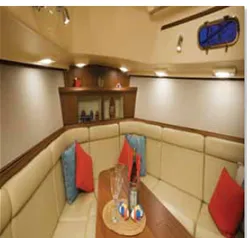
courtesy of Island Packet
In many ways, the Estero represents a return to Island Packet’s roots. The shoal draft and flat stern bring to mind boats like the Island Packet 31 (launched in 1983), which had a flat transom and appealed to gunkholers with a centerboard version. All of Island Packet’s mid-range cruisers have a relatively shallow draft, but the Estero’s four-foot draft opens up Carolina backwaters and Florida canals where other Island Packet owners will have to play the tides.
Apart from the keel-haircut, the hull profile is otherwise consistent with Johnson’s previous designs. Johnson is tall, so all of his boats carry plenty of headroom. The high freeboard and lack of any long windows to interrupt the expanse of buff-colored gelcoat make the deckhouse appear higher than it is, but the bowsprit, opening ports, and spring in the shear-line present the intended overall look of a classic, salty cruiser.
One traditional element missing from the Estero found on previous Island Packet designs is the traditional teak caprail—a signature feature for more than 30 years. This offers welcome relief from annual maintenance, although some old salts will no doubt miss the aesthetic appeal.
The boat’s length-to-beam ratio of 2.95 is also in keeping with Johnson’s previous designs, as is the conservative ballast displacement ratio of 40 percent. Comfort in a seaway—like seaworthiness itself—is difficult to quantify, but the boat’s motion-comfort ratio (a calculation introduced by designer Ted Brewer) of 31 puts it not far below that of the Island Packet 370, which has a longer waterline and an additional 5,000 pounds of displacement.
Johnson, who represented the National Marine Manufacturers Association on the Conformité Européenne (CE) committee that helped establish the ratings categories for sailboats (Category A for Ocean, Category B for Offshore, etc.), is keenly aware of the importance of stability, scan’tlings, and resistance to down-flooding in a boat that is to be sailed on oceans. His boats’ solid fiberglass laminate schedule, high freeboard, and conservative ballast-displacement ratios reflect his philosophy on these matters. All Island Packet yachts meet CE Category Standard A for Ocean, “designed for extended voyages where conditions may exceed wind force 8 (Beaufort scale) and significant wave heights of 4 meters and above but excluding abnormal conditions, and vessels largely self-sufficient.” Although PS does not regard the CE Category A to be an automatic stamp of approval of ocean voyaging, we do believe that Island Packets more closely approach our ideal of a cruising boat than some other boats that bear the same rating.
In the endless quest to turn a 36-foot boat into a comfortable second home, and still provide secure and comfortable berths while the boat is underway, the Estero takes a most radical step by placing the main social area forward of the mast. (The new IP 360 features the conventional V-berth/main saloon layout on the same hull.)
Boats with forward main saloons are by no means original, but they remain very rare birds. Perhaps the most familiar contemporary cruisers with this feature are those of the Gozzard line, which dedicate the space forward of the mast to a spacious sitting/dining area that easily converts to a queen-size berth. In the Gozzard version, the berth conversion can be a semi-permanent setup, because even the smallest Gozzard 37 has an alternate dining nook near the galley.
The Estero’s forward saloon is principally a social/dining area. With the drop-leaf table down, there’s comfortable seating for two couples. With the dining table up it could seat a family of four, and squeeze in a couple of guests, as needed. The table pivots, making it easy to slide in and out of the seats. Throw down sheets and pillows, and the two settees make comfortable berths.
Conversion to the larger berth is more complicated than it should be, considering the premium, well-ventilated sleeping space the saloon occupies. It requires two people (one on their hands and knees fiddling with a troublesome support pole) and optional filler cushions. And once it is set up for sleeping, there is no place to dine belowdecks. With room for four (friendly, we presume) adults and a passel of kids, it is the proverbial feather bed, but the conversion could be easier.
Just aft of the mast and to port is the U-shaped galley. The galley placement is probably the biggest advantage of this layout compared with other boats in this size. Instead of being tucked into an aft corner or in the line of traffic, the galley is set near the fore-and-aft center of the boat, with a hatch overhead and opening portlights for ventilation and a view. The galley covers all the essentials such as counter space, cupboards, and deep well-insulated fridge-freezer systems, but we were disappointed in the shallow, 6-inch-deep sinks—unusual for Island Packet.
Johnson stands 6-feet, 3-inches tall, so his interior designs are sensitive to a tall person’s needs. Just opposite the galley is a super-sized head featuring a bench seat in the separate shower stall.
The owner’s stateroom, located aft and to port, has 6-foot, 4-inches standing headroom, with a cutout in the berth for sitting or getting dressed. A hanging locker, bureau, and full-length mirror add homey touches. A 9-inch overhead hatch and opening portlight offer ventilation, although the hatch won’t allow much breeze if the boat is fitted with a dodger. Our test boat was fitted with a single, full-sized inner spring mattress. We would ask for a folding or two-piece mattress here to simplify access to the storage below, as well as access to the stern gland and stuffing box.
Opposite the owner’s cabin is the nav station with a fold-down chart table and a roomy pilot berth. This area could also be used for storage of larger items like sails, cushions, or guitars.
For the past 30 years, the standard Island Packet sail plan has been a cutter rig, featuring a high-cut foresail and a furling working staysail that sets on a Hoyt boom. While a deck-sweeping, club-footed staysail gobbles up foredeck space and leaves remarkable shin bruises, Island Packet owners praise the arrangement for balancing the helm and running wing-and-wing. The Hoyt boom has the added advantage of being self-vanging, keeping the leach clew from lifting as the sheet is eased.
The Estero breaks away from the cutter tradition (although its sistership, the soon-to-debut IP 360 brings it back). The Estero’s working staysail is eliminated, and a foresail sets from a Hoyt boom fixed just forward of the stem on the bowsprit. In this way, both the jib and the main are self-tacking, so working to windward is as easy as turning the wheel. The arrangement also allows for tight sheeting angles.
Although conventional mainsails with lazy jacks were the standard on earlier Island Packets, the company has seen a clear trend toward in-mast furling. According to Bill Bolin, vice president of sales and marketing at Island Packet, the company has sold few, if any, boats with conventional full-battened mainsails in the past eight years. PS generally prefers conventional mainsails for voyaging in boats this size, but if you plan to do a lot of short coastal hops, the in-mast Sparcraft mainsail furler can make life easier, allowing you to set, reef, and furl both sails from the cockpit.
The mainsail and jib halyards are led to dedicated Lewmar Ocean Series 16C two-speed winches on the mast; this reduces clutter at the cabin and makes sense for cruising boats with a furling mainsail. The mainsail roller-furling control line, jib sheet, and spare mainsail halyard lead aft through stoppers to the Ocean Series 30CT two-speed self-tailing winch on the portside of the companionway. The mainsheet and boom-vang lead through a stopper and matching winch on the starboard side of the companionway.
Those accustomed to contemporary sloops will be surprised to find that the only sail control line within easy grasp of the helmsman is the jib furling line, which is on 16CT Lewmar on the starboard coaming. Because the mainsail and jib set on self-tacking booms, the arrangement is not as inconvenient it would seem. Leading the mainsail traveler lines (fixed in cam cleats) aft allows limited sail control from the helm. A port coaming winch will be missed when you want to kedge off a shoal, or when trying to warp the stern to port.
The 7-foot-long cockpit seats offer plenty of room to stretch out. A large starboard locker offers room enough for two folding bikes and more; a port tray keep small items accessible. Liner bins in the coamings keep the deck clear of running rigging. The emergency tiller has a dedicated spot in the starboard locker.
Visibility is excellent, and the twin 2-inch cockpit drains and high bridgedeck deal with any boarding waves. Drop boards are solid hardwood. Comfortable platform seats are integrated into the stern rail.
The boat we test-sailed had an optional stern swim platform. By eliminating the sugar-scoop transom/swim platform on other Island Packets, the Estero benefits from more usable interior space, a larger cockpit, and more cockpit storage space. A boarding ladder is accessible from the water for emergency reboarding. One drawback to this design is the inevitable “slap” that will accompany pitching at anchor. According to Johnson, the platform is elevated high enough (24-inches above displacement waterline) so that slapping at anchor or added drag underway is unlikely.
“This is an immensely strong installation typical of our approach to all structural components on an IP,” Johnson said. “(It) has been validated over a number of years . . . by other IPs that have this identical installation.”
A high coaming and wide passage forward leads to the foredeck where a deep locker with an aft-opening Lewmar hatch seals a deep anchor well. The divided well swallows up chain and fenders and drains into the bilge through a watertight bulkhead that seals the locker off from the rest of the boat. An optional VRC 1250 Muir windlass, single bow roller, and chain stopper handled anchoring duties on our boat.

except where noted.
Johnson brings his engineering expertise to bear on the Estero’s mechanical systems. The conventional drive train is the most sensible choice for long-term cruising. The solid Edson CD-I geared rack-and-pinion steering is well adapted to belowdecks autopilot. The propeller and rudder skeg are protected by a long “shoe” extending from the keel to the skeg.
Twin lead-acid house batteries and a dedicated engine battery serve electrical storage needs. Pre-tinned, labeled wiring meets American Boat and Yacht Council (ABYC) standards. A Charles 5000 series three-stage temperature-compensated charger with a galvanic isolator protect the electrical system and ensure it is well charged at the dock.
The 60-gallon fuel tank is made of heavy-gauge, marine-grade aluminum (5052-H32), while the freshwater (120 gallon) and holding tanks (35 gallon) are located below the cabin sole and made of fiberglass. All through-hulls are bronze and through bolted to flanged seacocks.
Cables for the anchor windlass and bow thruster are pre-wired. The LPG system meets ABYC standards with a self-draining locker and shut-off valve in the galley. LED lighting is an option. The bow thruster, located under the main-saloon settee, had tighter all-around clearances than installations we’ve seen on other boats with big V-berths.
Performance
By contemporary fin-keel standards, the sailing performance of the Estero is unimpressive, but Island Packet owners aren’t the kind that go looking for the extra 5 percent of hull speed and the Estero isn’t meant to be a Wednesday-night racer.
Our test boat was provided by Ed Massey of Massey Yacht Sales and Services, and the test sail took place within sight of Massey’s Bradenton dealership on the Bradenton River, Fla., in squally weather, with light gusty winds from the east between 8 to 12 knots, with gusts to 14 knots.
At 2,400 rpm, the Yanmar 40-horsepower engine with a big 17-inch, three-bladed prop pushed the boat at 6.6 knots. At wide-open throttle, 3,400 rpm, the average speed was 7.3 knots. The higher RPM is clearly not an efficient motoring speed, but testing it confirmed that reserve horsepower is available if needed. Unlike flat-bottomed fin-keel boats, the Estero’s hull speed is tightly constrained by its waterline length. At the lower cruising speed, we registered 79 decibels in the center of the main saloon and a quiet 74 decibels in the cockpit with the companionway open. Vibration at the higher RPM raised the main saloon volume to 83 decibels. (Conversation is about 60-70 decibels.)
Under power, the Estero embodies the typical tradeoffs of a full keel. The full keel’s tracking ability—so helpful on long passages—becomes a handicap in close-quarter maneuvering. The lateral resistance lengthens turning radii, and when backing, the boat has a stronger tendency to “walk” in the direction of the prop rotation. Our test boat was equipped with a $6,000 Vetus bow thruster that took the drama out of docking and maneuvering at slow speeds. A good skipper will soon become accustomed to the Estero’s idiosyncrasies under power and learn to use prop-wash and spring lines to his advantage, but full-keel novices will appreciate the bow thruster.
Like her cutter-rigged cousins in the Island Packet line, the Estero is happiest on a reach. Broad reaching with the apparent wind at 135 degrees, the boat balanced well, but averaged only 4 knots speed over ground in about 9 knots of apparent wind—suggesting an asymmetrical spinnaker would be a wise addition in light-wind areas. On a beam reach in 9 knots apparent, average speeds were about 5.5 knots. The best sustained speed during our test was 6.3 knots, with the apparent wind at about 10 knots and 110 degrees.
Any shoal-draft boat must sacrifice windward performance, and the Estero is no exception. The Estero’s tight sheeting angles and foil-shaped full keel help add lift, but the windward performance is still held back by the increased skin drag and low-aspect keel.
The course made good on our test sail fell below fin-keeler standards, but it was comparable to that of similar boats we have sailed. The best sustained speed close reaching was 5.7 knots, and the boat tacked through 100 degrees, including leeway. (For a stark comparison, the lightweight J/95 daysailer, drawing 3 feet with its board retracted, tacked through 92 degrees in similar conditions.)
The Estero doesn’t like to be pinched, and it will quickly let you know when the main is over-trimmed with an insistent weather helm. Like many full-keelers with low-aspect rudders, too much helm will stall the boat. It responds slowly but positively to the helm, and it is slow to pick up speed. We would not characterize the Estero as exciting in light winds, but in breezier areas, the boat’s ability to keep her feet and to shoulder aside chop will be appreciated.
The Estero will appeal strongest to Island Packet fans who’ve been waiting for a shoal-draft, easy-to-sail boat that compares to the IP37 in terms of interior space. These strengths will be most apparent on intracoastal or riverine adventures like the Great Loop.
The novel changes aren’t suited for everyone. Those who cruise warm climates in summer, for example, will miss the large overhead hatch of a V-berth. The self-tending headsail will please sailors who prefer a relaxing bay sail or motor-sail to winch-grinding and close-hauled excitement.
The list price of $350,000 seems steep when you see IP37s going for less than half that, but Island Packet offers a generous 10-year warranty on both the hull and deck, and a three-year stem-to-stern warranty. Past owners have done fairly well sailing their boat for a couple of years and then trading up or selling for close to purchasing price, while the boat is still covered under warranty.
For those who like the shoal-draft concept but would prefer a conventional layout, the cutter-rigged IP360, with 130 square feet of additional sail area, fits the bill. While we see a niche for the Estero, we expect the IP360 will be a more popular design.
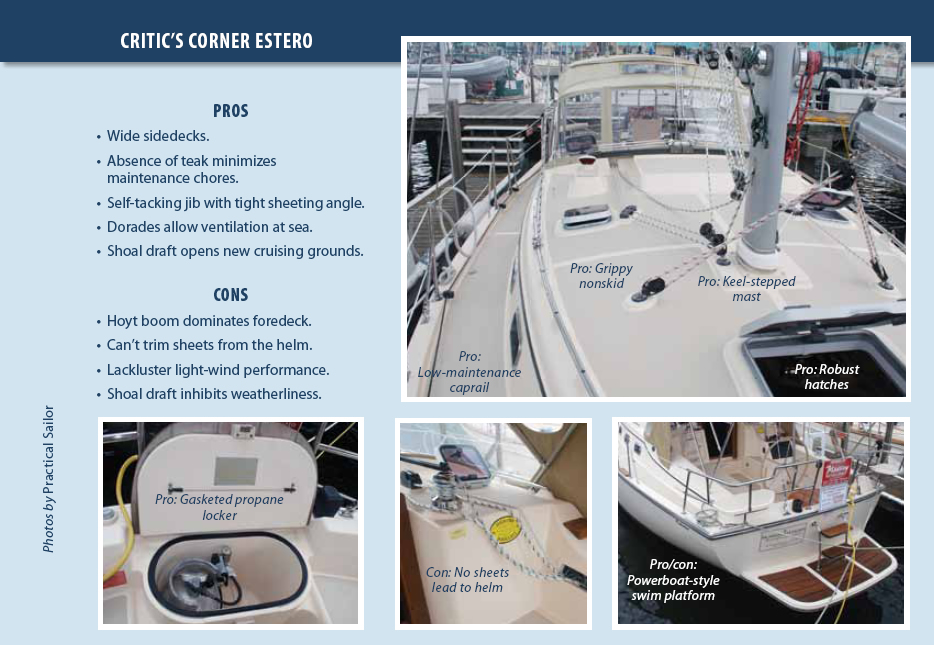
- Estero’s solid FRP hull, balsa-free deck is built to last
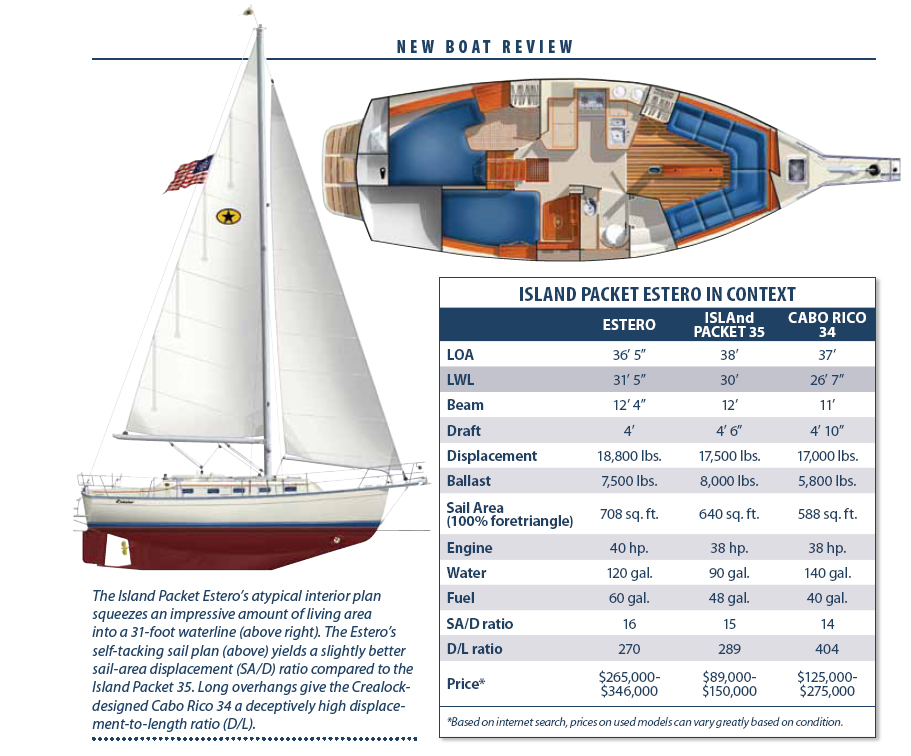
- Island Packet
RELATED ARTICLES MORE FROM AUTHOR
Leave a reply cancel reply.
Log in to leave a comment
Latest Videos
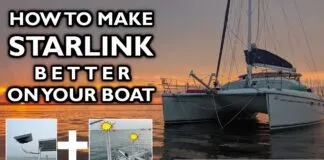
How To Make Starlink Better On Your Boat | Interview

Catalina 380: What You Should Know | Boat Review
- Privacy Policy
- Do Not Sell My Personal Information
- Online Account Activation
- Privacy Manager
Great choice! Your favorites are temporarily saved for this session. Sign in to save them permanently, access them on any device, and receive relevant alerts.
- Sailboat Guide
Island Packet 38
Island Packet 38 is a 37 ′ 11 ″ / 11.6 m monohull sailboat designed by Robert K. Johnson and built by Island Packet Yachts between 1986 and 1993.

- 2 / 12 Port Charlotte, FL, US 1991 Island Packet 38 $98,750 USD View
- 3 / 12 Port Charlotte, FL, US 1991 Island Packet 38 $98,750 USD View
- 4 / 12 Port Charlotte, FL, US 1991 Island Packet 38 $98,750 USD View
- 5 / 12 Port Charlotte, FL, US 1991 Island Packet 38 $98,750 USD View
- 6 / 12 Port Charlotte, FL, US 1991 Island Packet 38 $98,750 USD View
- 7 / 12 Port Charlotte, FL, US 1991 Island Packet 38 $98,750 USD View
- 8 / 12 Port Charlotte, FL, US 1991 Island Packet 38 $98,750 USD View
- 9 / 12 Port Charlotte, FL, US 1991 Island Packet 38 $98,750 USD View
- 10 / 12 Port Charlotte, FL, US 1991 Island Packet 38 $98,750 USD View
- 11 / 12 Port Charlotte, FL, US 1991 Island Packet 38 $98,750 USD View
- 12 / 12 Port Charlotte, FL, US 1991 Island Packet 38 $98,750 USD View
Rig and Sails
Auxilary power, accomodations, calculations.
The theoretical maximum speed that a displacement hull can move efficiently through the water is determined by it's waterline length and displacement. It may be unable to reach this speed if the boat is underpowered or heavily loaded, though it may exceed this speed given enough power. Read more.
Classic hull speed formula:
Hull Speed = 1.34 x √LWL
Max Speed/Length ratio = 8.26 ÷ Displacement/Length ratio .311 Hull Speed = Max Speed/Length ratio x √LWL
Sail Area / Displacement Ratio
A measure of the power of the sails relative to the weight of the boat. The higher the number, the higher the performance, but the harder the boat will be to handle. This ratio is a "non-dimensional" value that facilitates comparisons between boats of different types and sizes. Read more.
SA/D = SA ÷ (D ÷ 64) 2/3
- SA : Sail area in square feet, derived by adding the mainsail area to 100% of the foretriangle area (the lateral area above the deck between the mast and the forestay).
- D : Displacement in pounds.
Ballast / Displacement Ratio
A measure of the stability of a boat's hull that suggests how well a monohull will stand up to its sails. The ballast displacement ratio indicates how much of the weight of a boat is placed for maximum stability against capsizing and is an indicator of stiffness and resistance to capsize.
Ballast / Displacement * 100
Displacement / Length Ratio
A measure of the weight of the boat relative to it's length at the waterline. The higher a boat’s D/L ratio, the more easily it will carry a load and the more comfortable its motion will be. The lower a boat's ratio is, the less power it takes to drive the boat to its nominal hull speed or beyond. Read more.
D/L = (D ÷ 2240) ÷ (0.01 x LWL)³
- D: Displacement of the boat in pounds.
- LWL: Waterline length in feet
Comfort Ratio
This ratio assess how quickly and abruptly a boat’s hull reacts to waves in a significant seaway, these being the elements of a boat’s motion most likely to cause seasickness. Read more.
Comfort ratio = D ÷ (.65 x (.7 LWL + .3 LOA) x Beam 1.33 )
- D: Displacement of the boat in pounds
- LOA: Length overall in feet
- Beam: Width of boat at the widest point in feet
Capsize Screening Formula
This formula attempts to indicate whether a given boat might be too wide and light to readily right itself after being overturned in extreme conditions. Read more.
CSV = Beam ÷ ³√(D / 64)
Draft for CB version: 4.0’ BU, 7.58’ BD.
Embed this page on your own website by copying and pasting this code.

Discover Related Sailboats

Cruising World: 40 Best Sailboats
Cruising World polled their readers to determine the best sailboats of all time.
- About Sailboat Guide
©2024 Sea Time Tech, LLC
This site is protected by reCAPTCHA and the Google Privacy Policy and Terms of Service apply.
Electrostal History and Art Museum

Most Recent: Reviews ordered by most recent publish date in descending order.
Detailed Reviews: Reviews ordered by recency and descriptiveness of user-identified themes such as wait time, length of visit, general tips, and location information.
Electrostal History and Art Museum - All You Need to Know BEFORE You Go (2024)
- (0.19 mi) Elektrostal Hotel
- (1.21 mi) Yakor Hotel
- (1.27 mi) Mini Hotel Banifatsiy
- (1.18 mi) Elemash
- (1.36 mi) Hotel Djaz
- (0.07 mi) Prima Bolshogo
- (0.13 mi) Makecoffee
- (0.25 mi) Amsterdam Moments
- (0.25 mi) Pechka
- (0.26 mi) Mazhor

IMAGES
VIDEO
COMMENTS
LENGTH: Traditionally, LOA (length over all) equaled hull length. Today, many builders use LOA to include rail overhangs, bowsprits, etc. and LOD (length on deck) for hull length. That said, LOA may still mean LOD if the builder is being honest and using accepted industry standards developed by groups like the ABYC (American Boat and Yacht Council).
The Island packet 31 is a 31.0ft cutter designed by Bob Johnson and built in fiberglass by Island Packet Yachts between 1983 and 1989. ... The data on this page has been derived from different sources but a significant part is attributed to sailboatdata.com. We thank them for their encouragements and friendly collaboration.
The 31 was replaced with the Island Packet 32. In case you hadn't noticed, successful builders must at some point introduce new models, even if only a foot shorter or longer, so as not to compete with their own used boats. At present, the company builds a 27, 29, 32 and 35, though, like most owners of boats with bowsprits, you'll find ...
From BlueWaterBoats.org: The Island Packet 31, designed by Bob Johnson, founder of Island Packet Yachts, was the most risky and the most successful of the Island Packet lineage. Styled as a traditional cruiser but with more than a hint of broad hulled 'catboat' in her appearance, around 262 were produced between 1983 and 1989.
Overview The Island Packet 31, designed by Bob Johnson, founder of Island Packet Yachts, was the most risky and the most successful of the Island Packet lineage. ... According to sailboatdata.com. the 31 is cutter rigged which seems right. A cutter will not point like a sloop rig will. But it is considered good for cruising with many sail ...
First known as Traditional Watercraft Inc., and building a modified version of the Johnson designed BOMBAY EXPRESS 25. Island Packet was purchased by Hake Marine in January 2017. Island Packet Yachts 1979 Wild Acres Road Largo, FL 33771 USA New Boat Sales 1.888.724.5479 Direct Dial 1.727.535.6431 Fax 1.727.535.2751 web www.ipy.com [email protected].
1985 Island Packet 31 In great condition and ready to sail! With a cutter rig and a full keel The Island Packet 31 is an excellent cruising sailboat offering a high level of security and comfort.
General Information For The IP31. Island Packet 31. Since its introduction the Island Packet 31 has been recognized as a cruising classic thanks to the highly successful and acclaimed Island Packet design concept that combines a broad beamed, modern full keel hull with handsome traditional styling and a generous yet easily managed rig.
Island Packet Yachts is an American builder of blue water cruising sailing and motor yachts, based out of Largo, Florida.The incorporated name for the company is Traditional Watercraft, Inc. Production facilities are located on five acres of ground with 52,000 square feet (4,800 m 2) of covered manufacturing space in central Pinellas County.. Island Packet Yachts is a subsidiary of Traditional ...
The Island packet 38 is a 38.0ft cutter designed by Bob Johnson and built in fiberglass by Island Packet Yachts between 1986 and 1993. 188 units have been built. ... The data on this page has been derived from different sources but a significant part is attributed to sailboatdata.com. We thank them for their encouragements and friendly ...
1988 Island Packet 31. US$56,000. S&J Yachts | Middle River, Maryland. <. 1. >. * Price displayed is based on today's currency conversion rate of the listed sales price. Boats Group does not guarantee the accuracy of conversion rates and rates may differ than those provided by financial institutions at the time of transaction.
The shoal draft and flat stern bring to mind boats like the Island Packet 31 (launched in 1983), which had a flat transom and appealed to gunkholers with a centerboard version. All of Island Packet's mid-range cruisers have a relatively shallow draft, but the Estero's four-foot draft opens up Carolina backwaters and Florida canals where ...
Find Island Packet Yachts for sale in your area & across the world on YachtWorld. Offering the best selection of Island Packet Yachts to choose from. ... 1987 Island Packet 31. US$47,000. ↓ Price Drop. Neptune Yacht Sales and Services | New Bern, North Carolina. Request Info; New Arrival; 2021 Island Packet 439. US$765,000. ↓ Price Drop. US ...
LENGTH: Traditionally, LOA (length over all) equaled hull length. Today, many builders use LOA to include rail overhangs, bowsprits, etc. and LOD (length on deck) for hull length. That said, LOA may still mean LOD if the builder is being honest and using accepted industry standards developed by groups like the ABYC (American Boat and Yacht Council).
Island Packet preowned sailboats for sale by owner. Island Packet used sailboats for sale by owner. Home. Register & Post. View All Sailboats. Search. ... 31.4' Hunter 31 Grand Lake of the Cherokees, Oklahoma Asking $20,000. 34' Catalina C34 Deale, Maryland Asking $67,500. 28' TES 28 Gatineau Quebec Asking $64,000.
Island Packet 38 is a 37′ 11″ / 11.6 m monohull sailboat designed by Robert K. Johnson and built by Island Packet Yachts between 1986 and 1993. Great choice! Your favorites are temporarily saved for this session. Sign in to save them permanently, access them on any device, and receive relevant alerts. ... Source: sailboatdata.com / CC BY ...
The nearest airport to Elektrostal is Zhukovsky (ZIA) Airport which is 32.5 km away. Other nearby airports include Moscow Domodedovo (DME) (54 km), Moscow Sheremetyevo (SVO) (67.2 km) and Moscow Vnukovo (VKO) (75.4 km).
Krasnaya Presnya, 31, Moscow 123022 Russia +7 499 255-14-59 + Add website + Add hours Improve this listing. See all (19) See all (19) Ratings and reviews. 3.5 ...
Get directions to Yuzhny prospekt, 6к1 and view details like the building's postal code, description, photos, and reviews on each business in the building
LENGTH: Traditionally, LOA (length over all) equaled hull length. Today, many builders use LOA to include rail overhangs, bowsprits, etc. and LOD (length on deck) for hull length. That said, LOA may still mean LOD if the builder is being honest and using accepted industry standards developed by groups like the ABYC (American Boat and Yacht Council).
Tortuga Island Anhinga Trail Le Bois de Boulogne TRM - Thika Road Mall Hungarian State Opera House (Magyar Allami Operahaz) Museu de la Xocolata Trenitalia Frecciarossa Alligator Alley Old Arcade Small-group Milan Highlights e-Bike Tour SoHo, Little Italy, and Chinatown Walking Tour in New York Sri Lanka Tour, Kandy to Ella by Tuk-tuk and Train Nordnes Walking Tour: Bergen's History & Charming ...
First called ISLAND PACKET Mark II, an updated version of the ISLAND PACKET (ISLAND PACKET 26 MKI) which, in turn, derived from the BOMBAY EXPRESS 26. A keel Centerboard version also produced. Draft: max - 6.0′, Min - 2.67′ LOD: 26.17′ Replaced with the ISLAND PACKET 27 in 1984, which was a major redesign.